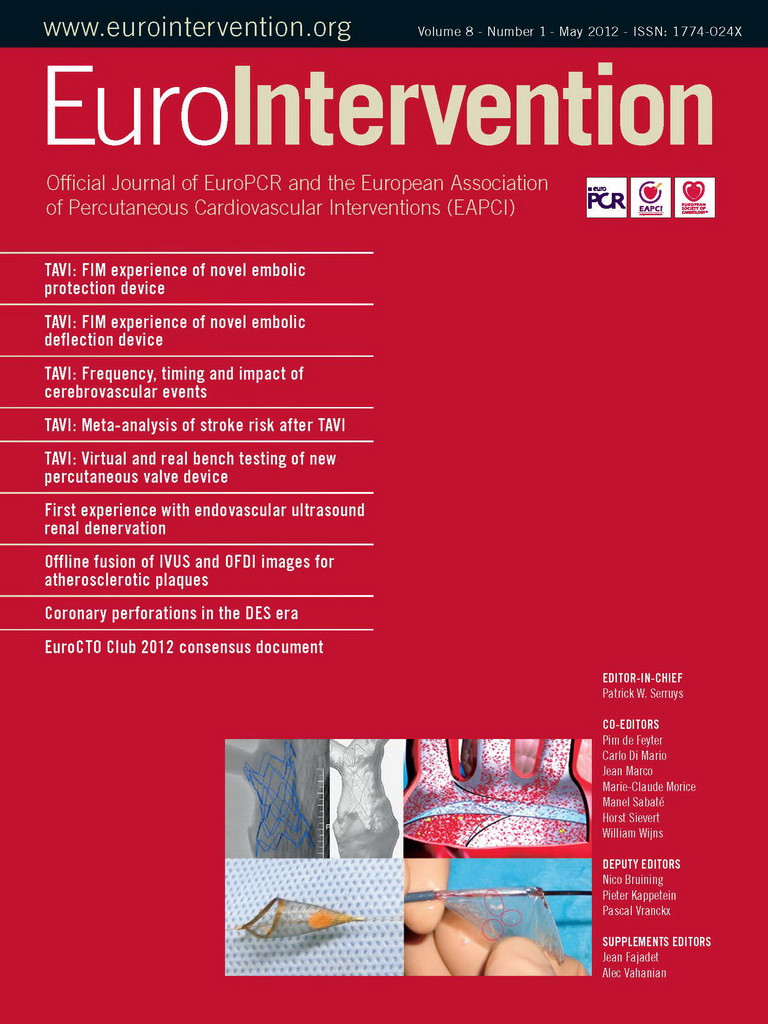Since our recent publication in EuroIntervention entitled “Brain tumours among interventional cardiologists: a cause for alarm? Report of four new cases from two cities and a review of the literature”1, we have received a lot of emails. This has been a thrilling, and at the same time a sad experience, as in each case, there has been a physician, a colleague of ours, a healer who treated patients in cathlabs around the world, and a family man who, in most cases, has died early due to the poor prognosis of this malignancy.
In our paper, we discussed four new cases: three GBM and one meningioma –all left-sided. We summarised the published data which comprised three interventional radiologists from Scandinavia and two interventional cardiologists from Toronto; overall there were nine cases1.
Recently, we were told that both patients from Canada had left-sided GBM (at the time we wrote the paper we did not have this information), thus making it 6 out of 6 with left-side involvement.
In the past weeks we were able to collect data on additional patients:
Left GBM
1. 53-year-old male, a paediatric electrophysiologist from Zürich, Switzerland, with 20 years of cathlab work.
2 67-year-old male physician from Virginia, USA, who implanted pacemakers for more than 29 years.
3. 59-year-old male interventional cardiologist from Dundee, Scotland, with 29 years of experience in the cathlab.
4. 34-year-old male interventional cardiologist from Florida, USA.
GBM data – side not yet known
5. 54-year-old male interventional cardiologist from Kentucky, USA.
6. 65-year-old male interventional cardiologist from Illinois, USA, with midline GBM.
7. 52-year-old female interventional radiologist from the West of Scotland, UK.
8. 55-year-old male interventional radiologist from the West of Scotland, UK.
Left parotids
1. 62-year-old male interventional cardiologist from London, UK, with 27 years of experience in the cathlab.
In summary, to-date we have collected, using primitive communication methods:
Twelve cases of GBM as well as five brain tumours [not GBM] and one parotid. Overall, as of March 3, 2012 –18 cases.
Of the 13 malignant brain tumours, we still don’t know the side involved in three of the cases. In ten of the cases we know the side involved –in nine of these cases– it was the left side!
The parotids as well as the meningioma are left-sided.
So, when the information exists, in 11 out of 12, 92% of cases, the side involved is the left side.
We have received information in three additional reports of GBM in cardiologists , but these individuals were not exposed to radiation in the cathlab. We did not evaluate for thyroid or haematological malignancies, but rather remained focused on brain and head tumours.
Solid evidence-based medicine in this field is lacking, and the cases reported in the original paper and the additional ones mentioned above could all be a simple matter of chance without any relationship to occupational exposure. More data is needed prior to establishing a causal relationship. No one can implicate radiation exposure to the aetiology of a neoplasm based on the identification of a few patients affected. Still, it is reasonable to assume that ionising radiation does not improve health!
We do not think we should jump to conclusions, but it is certainly an issue worth looking into.
Our community should discuss a more comprehensive methodology to collect “hard” evidence. Among the options are: 1) to send out requests by notification in journals in an endeavour to collect cases by self-reporting (anonymous of course for personal protection); 2) to use the national societies of interventional cardiology; 3) to send letters to cathlab directors to report cancers in their colleagues, living or dead, again without personal identifiers but with age, years of interventional work and type of cancer, and if fatal; 4) to send the information to interventional radiologists.
We have to verify the magnitude of this finding and to hope that this is the whole iceberg and not just the tip of the iceberg.
Reference




